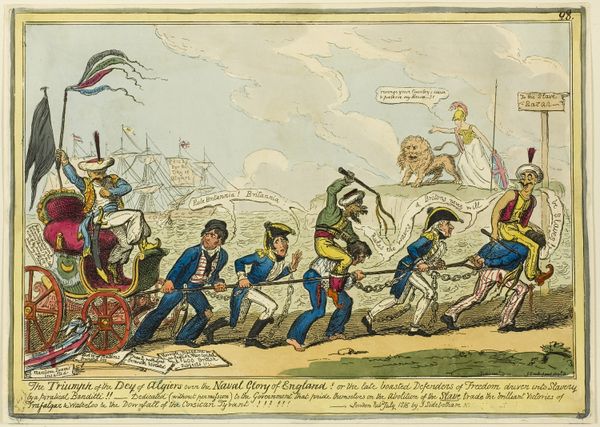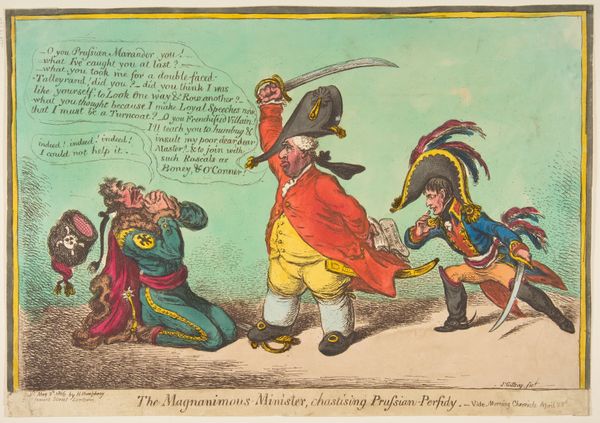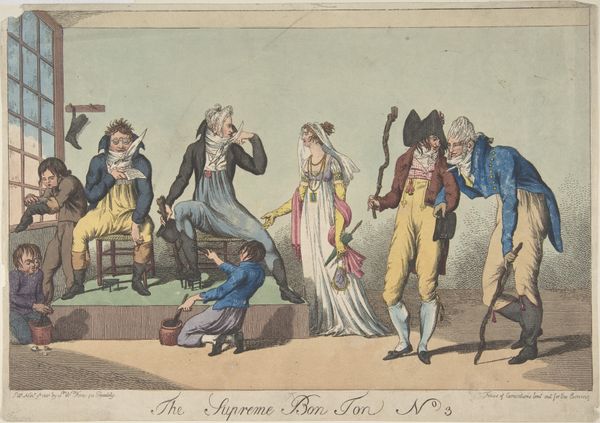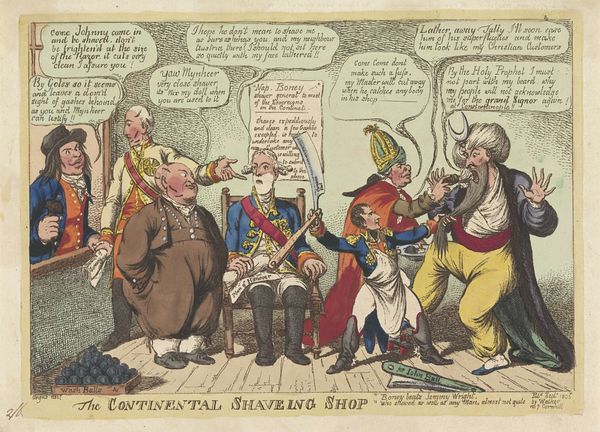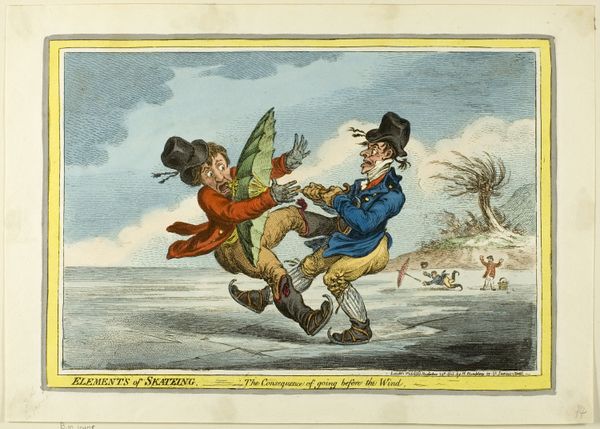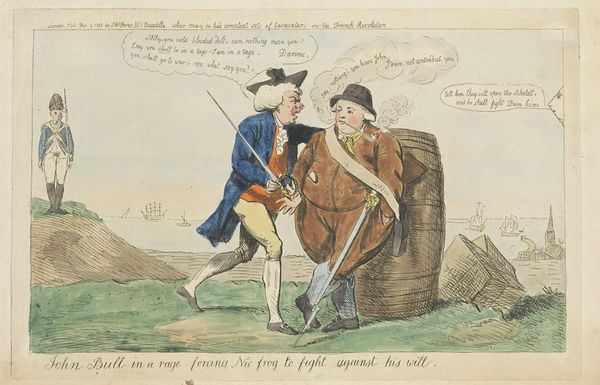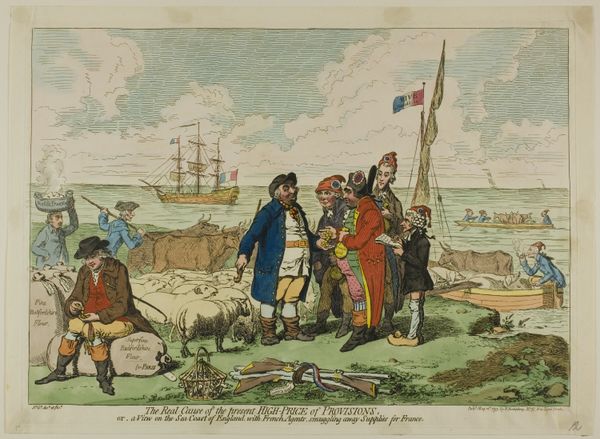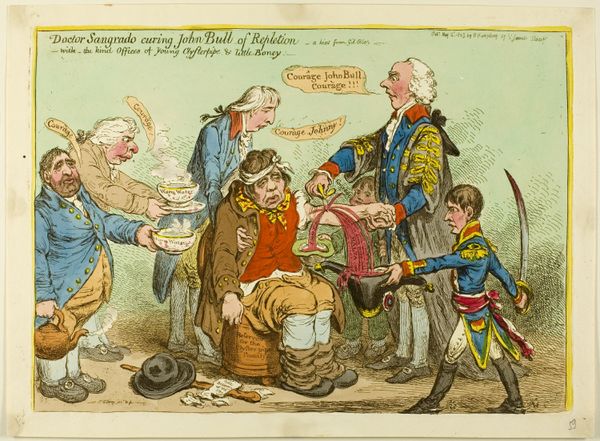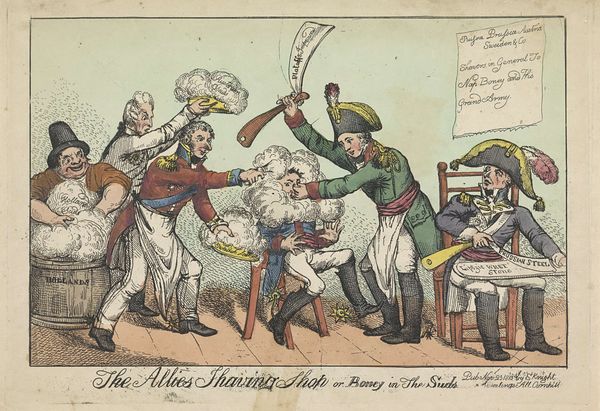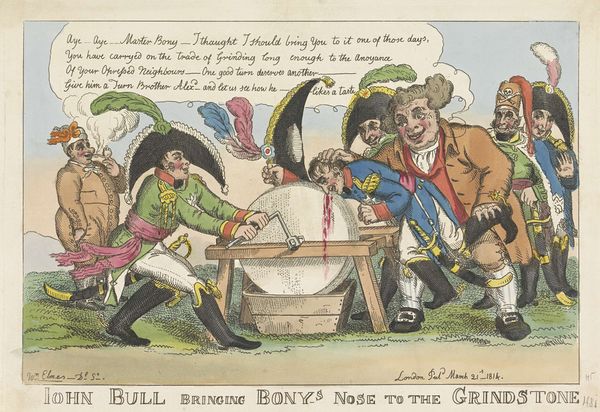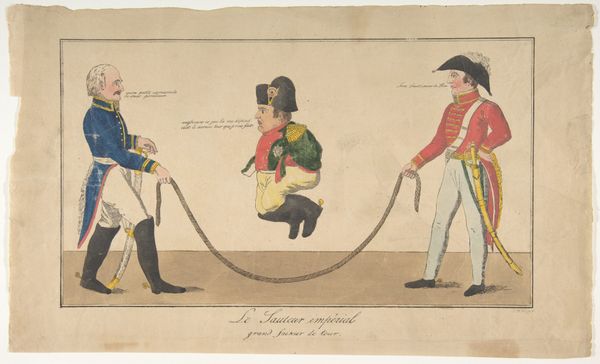
Hernieuwde vriendschap tussen Nederland en Engeland, 1799 Possibly 1799
0:00
0:00
print, engraving
# print
#
caricature
#
traditional media
#
personal sketchbook
#
romanticism
#
history-painting
#
cartoon carciture
#
engraving
Dimensions: height 235 mm, width 320 mm
Copyright: Rijks Museum: Open Domain
Curator: Let’s explore "Hernieuwde vriendschap tussen Nederland en Engeland, 1799," or "Renewed Friendship Between the Netherlands and England, 1799," a print possibly made in 1799 by Thomas Rowlandson, now housed at the Rijksmuseum. It employs engraving as its primary medium. What catches your eye first? Editor: It's chaotic! In the center, these two figures shaking hands seem almost dwarfed by the surrounding frenzy of retreating or collapsing figures. The expressions are also a standout. I want to understand who and what they all represent in this historical moment. Curator: The print, a caricature really, depicts the tentative reconciliation between England, symbolized by "honest Jack," and the Netherlands. Consider the materials—the paper, the ink, the engraved lines—each meticulously applied to create an easily reproduced image. Rowlandson created a satirical commentary accessible to a wide audience, critiquing the complex political and economic relationship. Editor: The social context is fascinating. After years of conflict during the French Revolutionary Wars, this print marks a brief period where the Dutch Stadtholder was restored with British support. But it's not a straightforward celebration. The surrounding figures are important—their frantic retreat hints at underlying tensions and instability of that renewed relationship. What can you say about the figure on the left with the bottle labeled "Holland's gin"? Curator: She exemplifies the stereotypical, caricatured image of a Dutch woman, doesn't she? Note her presence alongside the sailor. Here, we can look at how this piece implicates ideas surrounding Dutch mercantile interests, as well as British imports of this time, where it might be expected she offer tea, rather than gin! Editor: This gets into the layers of identity politics involved here: What narratives are being imposed and reinforced about the English versus the Dutch character and class status through image and text? I would guess these depictions were crafted specifically to fuel the nationalism that bolstered the war machine. The bags with the word "deceit" speak volumes! Curator: It's interesting how the medium of printmaking lent itself to such explicit propaganda, wasn't it? The relatively low cost of materials made it quite available for the era. The image allowed for quite a bold perspective of both national identity and social classes, readily digested and circulated, unlike fine painting available only to the wealthy. Editor: Absolutely. Examining the engraving and print itself alongside historical texts provides vital insight into how these ideas took root. This goes to show how social and economic structures were built, literally, with ink. Curator: This artwork is certainly an exemplar of its era's means for production. Editor: A great example of how we see a key historical moment through an artist's lens, complete with cultural and political subtext.
Comments
No comments
Be the first to comment and join the conversation on the ultimate creative platform.
